Boston Common
Introduction
Text-to-speech Audio
Images
Aerial view of Boston Common
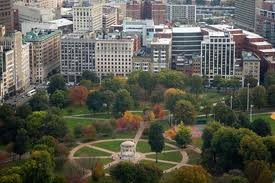
Boston Common (image from Wikimedia)
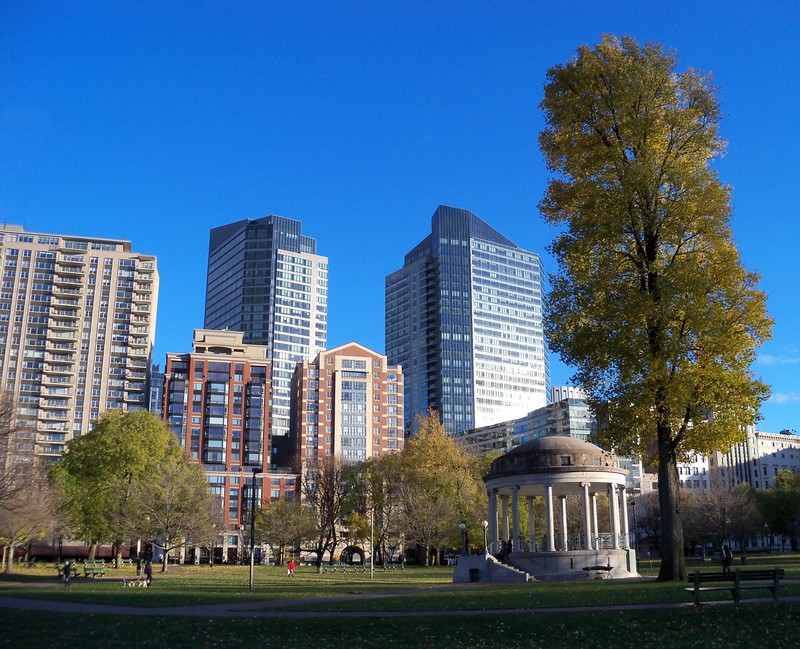
Boston Common (image from Curbed Magazine)
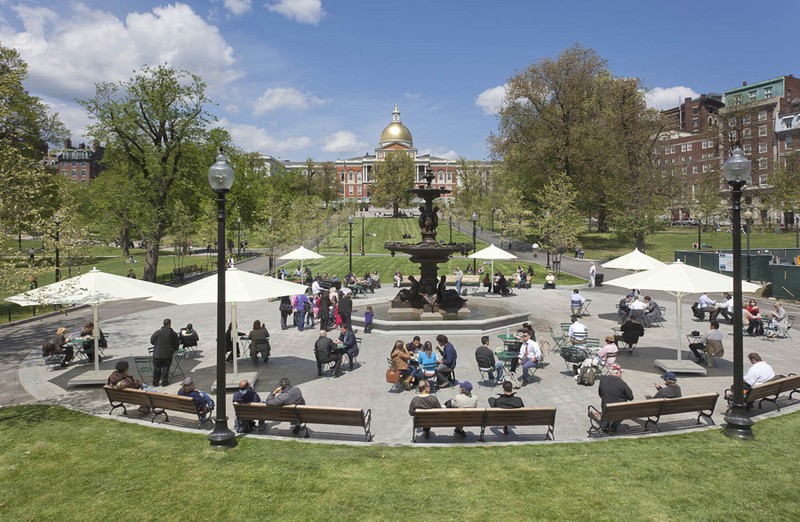
Beacon Street and the Common, 1808 watercolor by John Rubens Smith (image from the Boston Public Library)
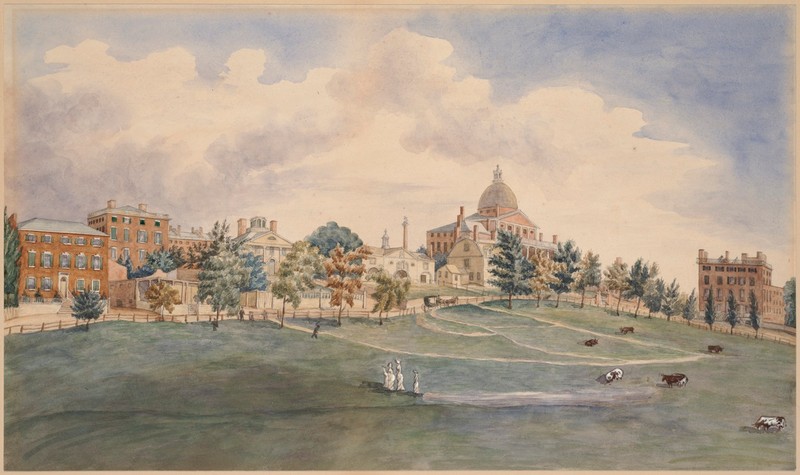
1848 engraving of Boston Common and the State House (image from the Boston Public Library)
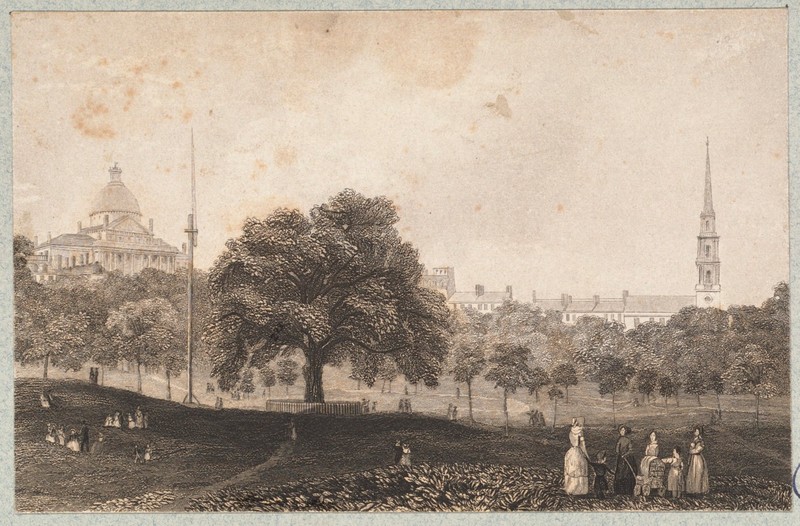
Boston Common in 1848 (image from Wikimedia)
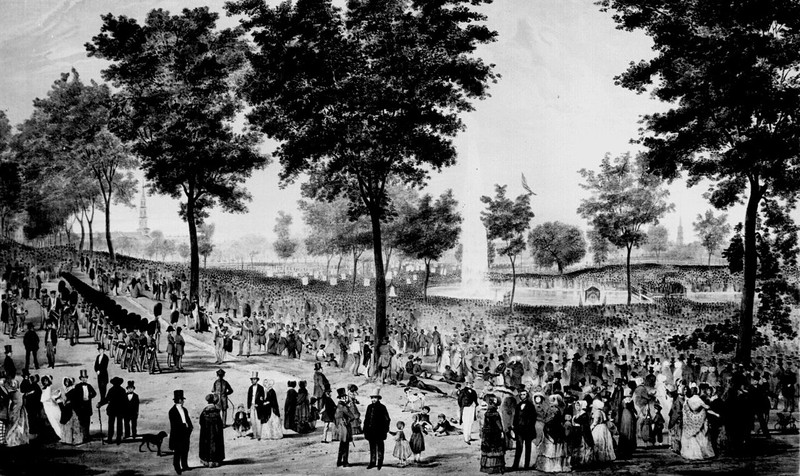
Boston Common's Great Elm (image from Celebrate Boston)
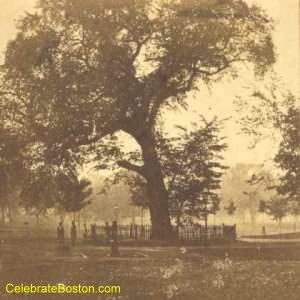
Boston Common marker (image from Historic Marker Database)
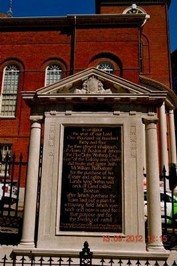
Boston's Rapid Transit marker (image from Historic Marker Database)
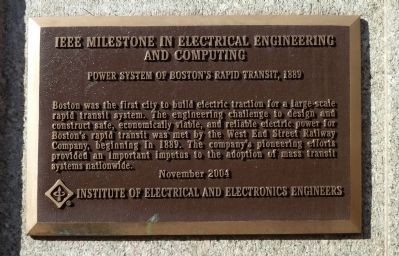
Commodore John Barry marker (image from Historic Marker Database)
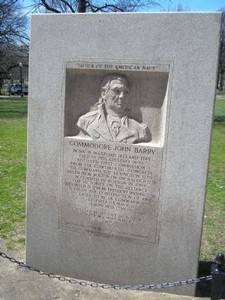
Lafayette Mall marker (image from Boston Public Library)
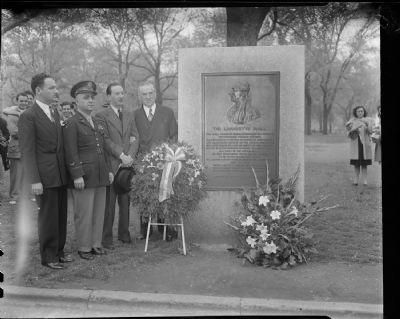
North Sea Mine Force memorial (image from Historic Marker Database)
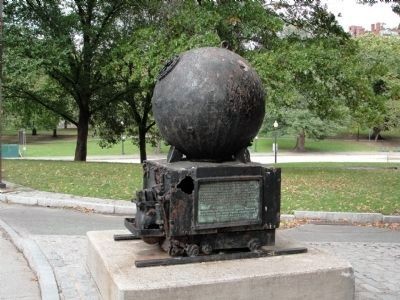
Soldiers and Sailors monument (image from Historic Marker Database)
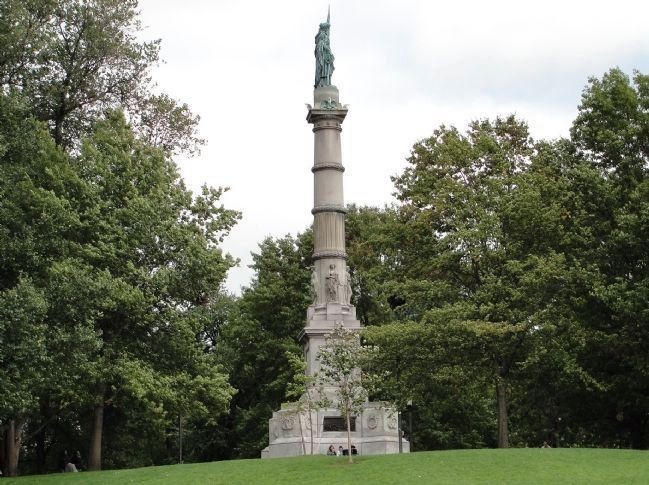
Shaw Memorial, front (image from Friends of the Public Garden)
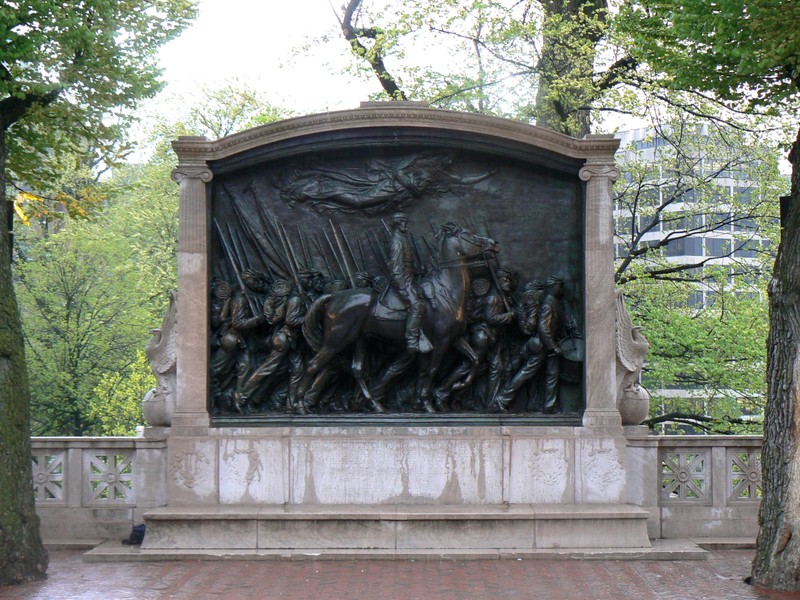
Shaw memorial detail (image from Historic Marker Database)
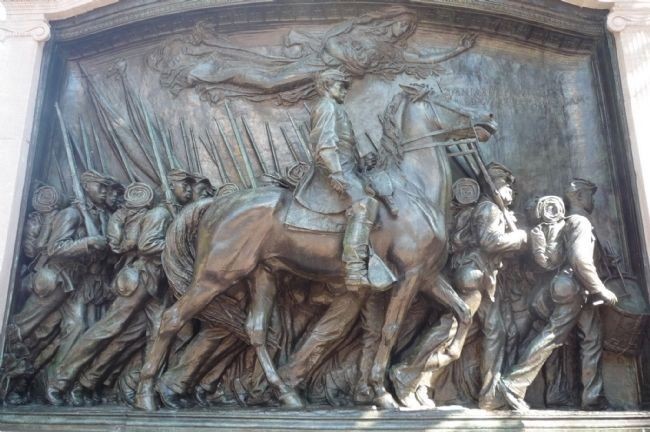
Shaw memorial, back (image from Historic Marker Database)
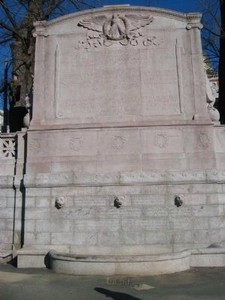
Central Burying Ground in Boston Common (image from Wikimedia)
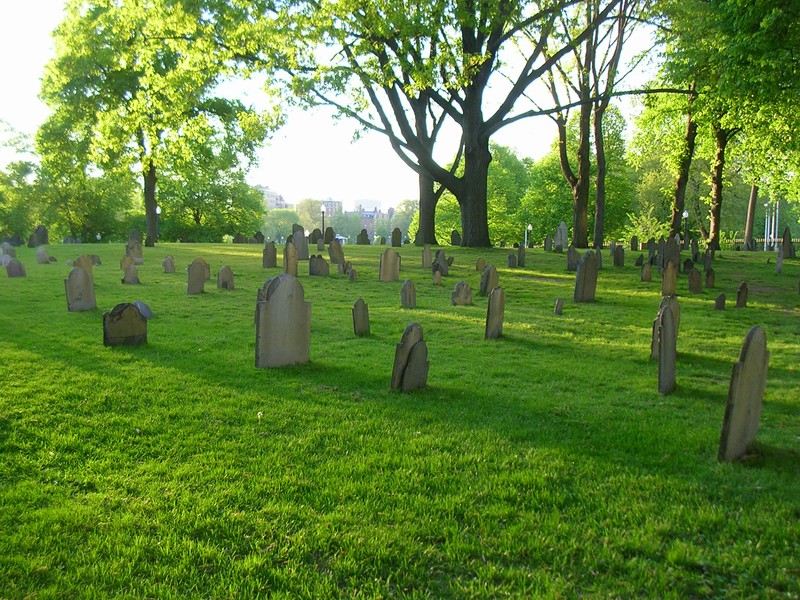
Backstory and Context
Text-to-speech Audio
History of the Boston Common
Boston Common was once the property of the first settler of the area which became Boston, a lone Anglican Minister named William Blackstone. When roughly fifty acres were purchased from Blackstone as common grazing land, the Puritans of the Massachusetts Bay Colony had only arrived four years earlier, in 1630. The Common's landscape originally included four hills and three ponds; of these, only Flagstaff Hill and Frog Pond remain. A huge tree, the Great Elm, present at the time of the purchase survived until a gale in 1876. Aside from grazing milk cows, the Boston Common in the seventeenth century also served as a military training ground and as an execution site. Puritan Boston frequently hung criminals, pirates, deserters, religious dissenters (including Mary Dyer and three other Quakers), "witches", and Native Americans from the Great Elm. The Common also contained a whipping post and stocks. In the eighteenth century, evangelical sermons were delivered in the Common, Central Burying Ground was set aside (1754, read more below), and British troops gathered and departed from the Common to fight in Colonial and Indian Wars, including the 1758 Battle of Louisbourg and the 1759 Siege of Quebec (French and Indian War).
Soon, Boston Common became a pivotal site in the oncoming American Revolution. A celebration was held in Boston Common in 1766 when the Stamp Act was repealed (with wine and fireworks provided by John Hancock and his wife, Dorothy Quincy Hancock), but only two years later protests against the high taxes on tea included the hanging of effigies in the Great Elm. An eight-year occupation of the city by British troops resulted. In 1775, the Sons of Liberty hung lanterns in the Great Elm as a symbol of unity against Britain. By that time, the Common was an entrenched British camp with 1,750 Red Coats in its garrison, an artillery, and a powder house. It was from Boston Common that the British departed for the battles of Lexington and Concord. However, the British were forced to evacuate in March of 1776, and when the British surrendered at Yorktown in October of 1781, the celebratory bonfire held in Boston Common was attended by George Washington, John Adams, and General Lafayette. John and Dorothy Hancock, who lived across Beacon Street from the Common, commissioned a bandstand for the grounds in 1770, and planted a double row of trees along the Beacon Street side of the Common and another double row along Tremont Street to form two of the five malls which circled the park. "The Mall" along Tremont Street was renamed the Lafayette Mall in 1824 and was destroyed during the construction of the first subway in America in 1897 (near the corner of Park and Tremont Streets).
This was the beginning of the Common's life as a park rather than a pasture; cows were subsequently banished in 1830, ponds were filled, additional malls and paths were added, an iron fence was put up around the perimeter, and a curb and fountain were added to the Frog Pond, all by 1848. A fence and sign were posted at the Great Elm, with the inscription:
THE OLD ELM. This tree has been standing here for an unknown period. It is believed to have existed before the settlement of Boston, being fully grown in 1722. Exhibited marks of old age in 1792, and was nearly destroyed by a storm in 1832. Protected by an iron fence in 1854. J. V. C. Smith, Mayor.
Among the events held in Boston Common in the nineteenth century were balloon ascensions, early football, receptions and military reviews, political conventions, sledding contests, Fourth of July celebrations, speakers, and Native American dances. With the onset of the American Civil War, anti-slavery demonstrations, recruitment rallies, and political addresses to Union Troops were hosted, followed by a victory celebration at the end of the war. When President Lincoln was assassinated, a mass demonstration of mourning took place at the Common.
The second half of the nineteenth century brought public art in the form of sculpture and monuments to Boston Common. The Brewer Fountain was the first, donated in 1868 by a wealthy Boston merchant of the same name. Featuring figures of Neptune, Amphitrite, Acis, and Galatea, the fountain is a copy of a French original 1855 Paris World Fair gold medal winner, and now sits near the Tremont Street Mall. In 1877, sculptor Martin Milmore's Soldiers and Sailors Monument on Flagstaff Hill was placed in honor of Civil War veterans. Eleven years later, the Boston Massacre Memorial was dedicated, also near the Tremont Street Mall. The most notable sculpture in the park, however, is the work of Augustus Saint-Gauden: the Shaw/54th Regiment Memorial, opposite the State House, which was commissioned in 1884 and unveiled after 14 years of work, on May 30, 1897. It honors Colonel Robert Gould Shaw and the Massachusetts 54th Regiment, the first volunteer Black regiment in the Union Army, many of whom died at Fort Wagner, South Carolina, in 1863. The Parkman Bandstand, named for Common benefactor George Francis Parkman, was dedicated in 1912 and was used both for concerts and public speaking events, including an anti-Vietnam war speech given by Martin Luther King, Jr. in the 1960s and the first papal mass in North America, delivered by John Paul II in 1979.
Victory gardens, war bond rallies, troop entertainment, and victory parades were hosted in the Common during the first and second World Wars. During Boston's 300th anniversary celebration in 1930, the Founders Memorial, depicting William Blackstone and John Winthrop, was dedicated at Beacon Mall. Commercial aviation was promoted by Charles Lindbergh in Boston Common, and later it was the site of 1960s rallies for civil rights and against the Vietnam War. The Parkman Plaza in front of the Visitor's Center was dedicated in 1960. However, by the 1970s, the park had lost roughly half its trees, its fountains and the Frog Pond were empty, and the fencing had been donated as scrap metal during the WWII war effort.
The Friends of the Public Garden, a non-profit citizen's advocacy group, was formed in 1970 to address such problems in the Boston Public Garden (adjoining the Common), the Boston Common, and the Commonwealth Avenue Mall. Working with the Mayor and the Parks and Recreation Department, the Friends have helped restore the Brewer Fountain, the playground and bandstand, and the Frog Pond, which now serves as an ice rink in the winter, a spray pool in summer, and a reflecting pool in the fall and spring. A carousel and Tadpole Playground nearby provide additional activities for children. Today, the park hosts sports, exhibitions, concerts, a Shakespeare festival, rallies and protests, charity walks, art shows, annual demonstrations by the Ancient and Honorable Artillery Company (formed in 1638), and Boston's New Year's Eve celebration, First Night. A number of monuments, historic markers, and other park features are depicted in the Friends of the Public Garden brochure.
Central Burying Ground
Established in 1754, Central Burying Ground helped alleviate overcrowding in the King's Chapel, Copp's Hill, and Granary Burying Grounds. Purchased from Andrew Oliver, Jr., the grounds were originally part of Colonel Fitch's pasture within the Boston Common. The first burials in Central Burying Ground were paupers, French Roman Catholic immigrants, and foreigners who died in Boston, as the ground was considered the least desirable due to its distance from the center of town. Later, the British buried soldiers who died in combat or of illness during the Revolution, and both American British soldiers killed at the Battle of Bunker Hill are interred in the cemetery, along with Boston Tea Party patriots including Samuel Sprague. The painter Gilbert Stuart (who painted George Washington's portrait), the composer William Billings, poet Charles Sprague, and noted restauranteur Jean Baptiste Julien are also interred here. Beginning in 1793, brick and stone tombs were added to the Boylston Street side of the grounds. Mayor Josiah Quincy, desiring to extend the Boylston Street Mall, closed the ground to new burials in 1826, but the ordinance was rescinded ten years later. However, the same year new tombs were permitted (1836), a row of tombs were removed for the extension of Boylston Street to connect with Tremont Street. The remains disturbed by the construction are housed in "The Dell," a large, free-standing tomb on the western edge of the grounds. The corresponding Mall was also extended, and unclaimed graves were buried beneath the new walkway. During construction of the Boylston Street Subway in 1894, several tombs buried during the 1836 alterations were uncovered, along with 910 individuals. The remains were re-interred the following year, marked by a slate tablet in the northwestern portion of the burying ground.
Historic Marker Inscriptions:
Boston Common
In or about the year of our Lord One thousand six hundred thirty and four the then present inhabitants of said Town of Boston of whom the Honble John Winthrop Esqr Govnr of the Colony was chiefe did treate and agree with Mr William Blackstone for the purchase of his
Estate and rights in any Lands lying within said neck of Land called Boston after which purchase the Town laid out a plan for a trayning field which ever since and now is used for
that purpose and for the feeding of cattell. / The deposition of John Odlin and others concerning the sale of Blackstone land known as Boston Commons.
Boston Common
Founded 1634
Neighborhood of Revolution
“Paul Revere . . . started on a ride which, in a way has never ended.” - Esther Forbes, author of the classic study, Paul Revere and the World He Lived In
In the course of just two pivotal days – April 18 and 19, 1775 – the preceding years of unrest burst into insurrection. Paul and Rachel Revere, plus several of their sixteen children, lived in an old house in what is now Boston’s oldest neighborhood, the North End. Paul was a middle-class artisan, a trusted and active member of his community who belonged to the Masons, the Sons of Liberty and the North End Caucus. His neighbors included both patriots and loyalists to the British cause, like Gov. Thomas Hutchinson. On the night of April 18, Revere planned the hanging of two lanterns in the steeple of the Old North Church, as he and other express riders sped off to warn fellow patriots that British soldiers were on the march. By morning, colonial militia had assembled in Lexington and Concord, ready for the first military encounters of the Revolution.
When the British left “by sea” for Lexington and Concord, they were really crossing the Charles River. Camped on Boston Common, the redcoats slipped into their boats at the foot of the Common – where the landfill based Charles Street runs today – then rowed across the river to continue their march.
Revolution of Minds and Hearts
“ . . . In every human breast, God has implanted a principle, which we call love of Freedom . . . ” – Phillis Wheatley, African American slave-poet, member of Old South Congregation
For more than a century before the first musket was fired in America’s War for Independence, Puritan-bred Bostonians embraced a strong heritage of community and a culture of freedom that was remarkable among colonial settlements. Boston Common and its surrounding sites illustrate this unusual past, and include places where townfolk attended America’s first public school, governed their own church congregations, assembled and drilled local militia for self protection and stood toe-to-toe to protect their Puritan church land from Anglican intrusion. “The Revolution effected before the war commenced,” observed John Adams. “The Revolution was in the minds and the hearts of the people . . . ”
Boston Common itself was a site for a wide array of colonial activities that ranged from grazing cows and hanging enemies to marching armies and staging public protests.
In Defense of Freedom
“The day – perhaps the decisive day – is come, on which the fate of America depends.” – Abigail Adams, patriot, feminist, and wife of John Adams
Less than two months after the Battles of Lexington and Concord, patriots encountered what turned out to be the bloodiest battle of their War for Independence. Entrenched in a redoubt on Breed’s Hill in Charleston, a mound mistakenly dubbed Bunker’s Hill, the ill-equipped colonists valiantly repelled two assaults by the redcoats before succumbing to the third attack. Though the British army won the battle, their losses were immense, inspiring patriots to continue armed resistance. By 1783, America had won her independence, but still had to fight to defend her hard-earned freedoms. The invincible U.S.S. Constitution, popularly known as “Old Ironsides,” was one of the newly-formed U.S. Navy frigates built to defend the young country – against pirates, the British or any others who would challenge our land and liberties.
Boston Common continued to be a major stage as the War for Independence evolved. Many of the British killed at the Battle of Bunker Hill, for example, were buried in the Common burying ground, located at its Boylston Street border.
The People Revolt
“What we meant in going for those Redcoats was this, we always had governed ourselves and we always meant to. They didn’t mean we should!” - Capt. Levi Preston, Patriot leader, in Reminiscences of the War
In the year 1750, few Bostonians even considered the idea of breaking away from their British mother country. Between the years 1761 and 1775, however, differing views of the rights of the colonies under British rule led to a series of actions, reactions and tumultuous encounters between Britain and her Boston colonists that snowballed toward war. Certain British laws and acts – like the Sugar, Stamp and Townshend Acts, the military occupation of Boston, and the Boston Massacre – increasingly incensed the liberty-loving colonists. Assembling in town meetings and swayed by the oratory of emerging leaders like James Otis, Sam Adams and Joseph Warren, Boston men and women began to take collective action, countering with boycotts, protests, and the famous Tea Party.
Curiously, Boston Common was a center for both side of the impending conflict, patriots assembled and protested here, while British regulars camped and drilled here during the pre-war years of military occupation.
The Freedom Trail - The Revolution Begins Here
Over two hundred years ago, colonial Bostonians led New England and America on the road to freedom and independence. Today, Boston’s Freedom Trail is a 3-mile walking path connecting sixteen historic sites from Boston Common to Bunker Hill, that tells the story of Boston’s colorful and rebellious past. The Freedom Trail shows how the American Revolution was born, and how our nation was created and defended by ordinary people under extraordinary circumstances.
Boston Common
Founded 1634
The Common, an Historic Overview
In 1634, only four years after John Winthrop and the Puritans of the Massachusetts Bay Colony settled the Shawmut Peninsula and created the town of Boston, these colonists bought a 48-acre tract of land on the lower slopes of Beacon Hill. Purchased from Reverend William Blackstone, an Anglican hermit who had been the area’s sole inhabitant for nearly a decade, the land was immediately set aside as an English-style “commonage,” or common area for the use of all Boston’s townfolk.
Although today we think of Boston Common as a tree-lined public park, its uses were far different during its first two centuries of existence . During this early era, the Common was a scene of public rallies and celebrations, a favorite place for recreations such as promenading, ball playing and sledding, but it also served as a military training field, cow and sheep pasture, public punishment site, and burial ground. For eight years, the British redcoats camped and drilled on the Common and many were buried here in the years of occupation leading into the American Revolution.
Though the first tree-lined pedestrian mall appeared in 1728, the Common’s most conspicuous foliage was the ancient Great Elm. Ironically it doubled as a protective shelter and meeting place, and in the 17th century as the colony’s dreaded hanging tree.
By the mid-19th century, the American parks movement had taken root in Boston and the face of the Common began to look substantially more modern. New tree-lined walks, commemorative statues and plaques, fountains, and iron fences and gates were gradually added, while activities continued to include public rallies and demonstrations, ball games, festive celebrations, musical concerts, in addition to sylvan strolls. The ancient Frog Pond, now paved, became a site for wading and ice skating.
Throughout its history, the Common has served the dual role of meeting ground and public park, a legacy of which will continue into the 21st century. In sum, the Common is a microcosm and a mirror of all of Boston’s past – and that of America as well.
Soldiers and Sailors Monument
To the men of Boston who died for their country on land and sea in the War which kept the Union whole, destroyed slavery and maintained the Constitution. / The grateful City has built this Monument that their example may speak to coming generations. / Martin Milmore, sculptor / Erected 1877 by City of Boston.
North Sea Mine Force
Memorial
— U. S. Navy, World War I —
A type of the 56,571 mines laid and swept in the mine barrier placed in the North Sea by the United States Navy during the World War, 1917-1919, the greatest achievement of its nature recorded in all naval history and placed here as a tribute to those who sacrificed their lives and to the survivors of this feat. / Presented to the City of Boston through the North Sea Mine Force Association. / October 26, 1921
Commodore John Barry
“Father of the American Navy”
Born in Wexford Ireland 1745 / Died in Philadelphia 1803 / Received first commission from the Continental Congress to command the Lexington 1775 / Sailed from Boston on the Raleigh 1778 / Acclaimed in Boston in 1780 for victories on the Alliance / Appointed in 1794 by President Washington to plan the construction of and later to be in command of first U.S. Navy / Launched 1798 / Erected by the City of Boston / James M. Curley, Mayor 1949 / “Tablet restored by the George B. Henderson Foundation, 1976”
Memorial to Robert Gould Shaw and the Massachusetts 54th Regiment
Omnia Relinqvit / Servare Rempvblicam / Robert Gould Shaw / Colonel of the Fifty Fourth Regiment of Massachusetts Infantry / born in Boston 10 October MDCCCXXXVII / Killed while leading the assault on Fort Wagner South Carolina 18 July MDCCCLXIII
Right in the van, on the red rampart's slippery swell,
With heart that beat a charge he fell
Foeward as fits a man;
but the high soul burns on to light men's feet
where death for noble ends makes dying sweet
[from James Russel Lowell's poem "Memoriae Positum"] //
[Inscription on back composed by Charles W. Eliot, then president of Harvard University] /
To the Fifty Fourth of Massachusetts Regiment Infantry / The White Officers taking life and honor in their hands cast in their lot with the men of a despised race unproved in war and risked death as inciters of a servile insurrection if taken prisoners - besides encountering all the common perils of camp march and battle. / The Black rank and file volunteered when disaster clouded the Union cause - served without pay for eighteen months till given that of white troops - faced threatened enslavement if captured - were brave in action - patient under heavy and dangerous labors - and cheerful amid hardships and privations. / Together they gave to the nation and the world undying proof that Americans of African descent possess the pride, courage and devotion of the patriot soldier. One hundred and eighty thousand such Americans enlisted under the Union flag in MDCCCLXIII - MDCCCLXV / [Underneath on the back; in 1897 were inscribed the names of the other five officers killed in battle. Of these, only Russel and Simpkins died at Fort Wagner]: Cabot Jackson Russel, Captain • William Harris Simpkins, Captain • Edward Lewis Stevens, 1st Lieutenant • David Reid, 1st Lieutenant • Frederick Hedge Webster, 2nd Lieutenant / [Under these names is an extract from the address given by Governor Andrew on the departure of the regiment]: I know not my commander where in all human history to any given thousand men in arms there has been committed a work at once so proud, so precious, so full of hope and glory as the work committed to you. / [Under Governor Andrew's address, are inscribed 62 names of those soldiers from the Fifty-fourth Massachusetts Regiment who died during the assault on Fort Wagner. They were added in 1982. Above these names is inscribed]:
The Memory of the Just is Blessed / [On the marble at one end of the terrace, words of Mrs. Robert C. Waterston]: O fair haired northern hero with thy guard of dusky hue up from the field of battle rise to the last review. / [On the marble at the other end of the terrace the words of Ralph Waldo Emerson]: Stainless soldier on the walls knowing this and knows no more whoever fights whoever falls justice conquers evermore. / Erected 1897.
The Sculptor
The Shaw - 54th Regiment Memorial, the outstanding tribute to soldiers of the Civil War, was created by one of America's foremost sculptors, Augustus Saint Gaudens (1848 - 1907). Born in Dublin, of a French father and an Irish mother, he grew up in New York, was apprenticed to a cameo cutter at 13, and studied at the Ecole des Beaux Arts in Paris. His best known works include the Adams Memorial in Washington, D.C., General Sherman in New York and President Lincoln in Chicago. His home in Cornish, New Hampshire is a National Historic Site. The setting for the memorial was designed by the distinguished architect, Charles F. McKim.
The Monument
The Shaw - 54th Regiment Memorial honors Colonel Robert Gould Shaw and members of the Massachusetts 54th Regiment who died in the assault on Fort Wagner, South Carolina, July 18, 1863. The 54th was the first regiment of Black volunteers from the North to fight in the Civil War. On the back of the monument are inscribed the names of the members of the 54th who died with Colonel Shaw in the cause of freedom and union. The monument was erected through private donations and given to the City of Boston in 1897. It became part of Boston African - American National Historic Site in 1980. Funds contributed from across the United States made possible its restoration in 1982 - 84.
The Lafayette Mall
This mall is named in honor of Marquis de Lafayette distinguished French soldier Major-General in the War of American Independence and illustrious patriot of the French Revolution who nobly served the cause of liberty on two continents invited by act of Congress to revisit the United States as a guest of the nation in 1824 He was welcomed with signal honor as he passed along this mall. / Erected by the city of Boston 1924 / He laid the corner-stone of Bunker Hill Monument June 17, 1825 / "Heaven saw fit to ordain that the electric spark of liberty should be conducted through you from the New World to the Old"
Power System of Boston’s Rapid Transit
IEEE Milestone in Electrical Engineering and Computing / Power System of Boston’s Rapid Transit, 1889 / Boston was the first city to build electric traction for a large-scale rapid transit system. The engineering challenge to design and construct safe, economically viable, and reliable electric power for Boston’s rapid transit was met by the West End Street Railway Company, beginning in 1889. The company’s pioneering efforts provided an important impetus to the adoption of mass transit systems nationwide. / November 2004 / Erected by the Institute of Electrical and Electronics Engineers.
